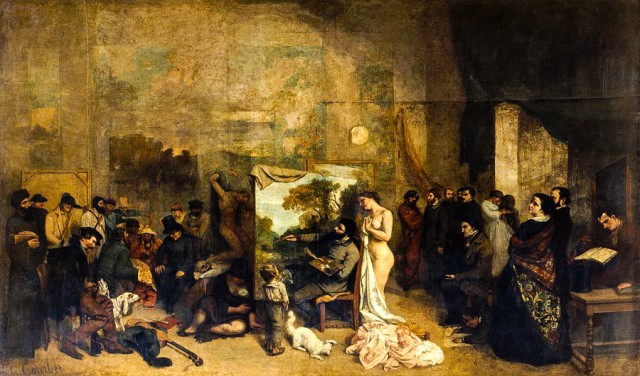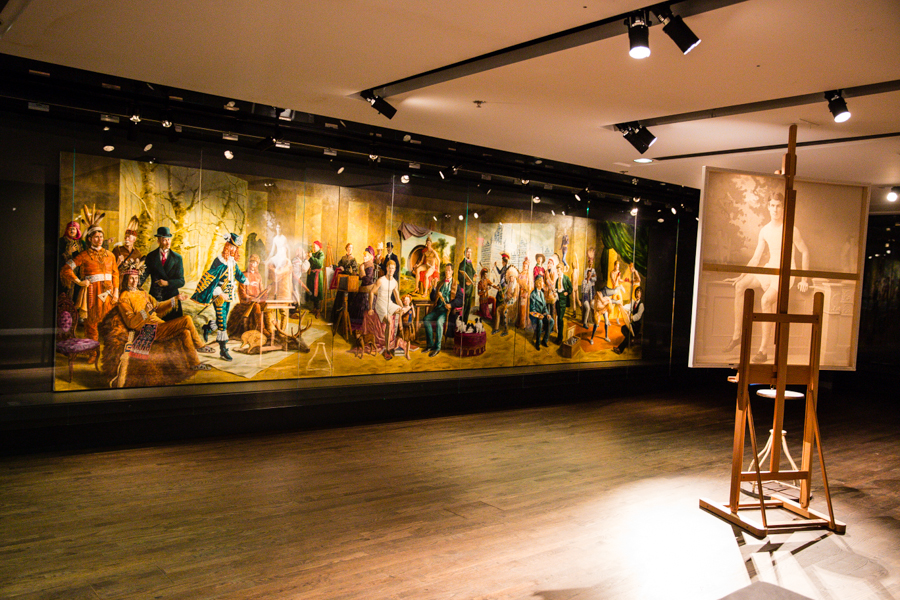It is always a challenge to start something new, whatever the project may be. For some, such as Kent Monkman, the artist-in-residence at the McCord Museum, the process may prove to be a bit more intricate than for others. Monkman, an established Toronto artist of Cree ancestry, works within a variety of mediums. He drew on the McCord’s Notman Photographic Archive, which has over 600,000 photographs taken by the Notman studio, and Gustave Courbet’s famous painting “The Painter’s Studio” (1854-55) as inspiration for a work that was unveiled at the museum’s vernissage last week. Spanning 7.3 metres in length, the painting was – literally – no small feat. Monkman looked through over 30,000 images from the 19th century photographer to incorporate over 30 into his work. On viewing, it is clear “Welcome to the Studio” successfully used the black and white photos to draw attention not only to Canada’s colonialist legacy, but the impact colonialist histories have on our perception of events and the implications this perception has for Canadian Indigenous identities, past and present.
Monkman’s works often engage with the political, social, and sexual aspects of the identity and history of Indigenous people in Canada. True to his practice, “Welcome to the Studio” explores Indigenous identities, past contact with settlers, and the construction of historical narratives by superimposing figures from the Notman collection onto the arrangement of Courbet’s Painter Studio. Monkman portrays himself in the place of Courbet, but in the garb and pose of William Notman’s own famous self-portrait. Unavoidably, this compositional representation ties Monkman to the two other men, while raising questions of his identity as an artist and an individual of Cree descent.

Photography as a medium stands in as ‘fact,’ ‘evidence,’ or ‘proof’ of events, while painting, on the other hand, is rarely granted such power. By incorporating photography into his piece, Monkman blends ‘reality’ with fictive narratives and questions the absoluteness of photography’s ability to tell truth. This is particularly significant when considering the reality of the ‘historical’ depictions of Indigenous people, which were frequently staged and functioned to reduce their identities to stereotypes of ‘noble savages’ doomed for ‘extinction’ in the eyes of European settlers. This colonialist narrative is evident in photos of the Notman collection, such as the photograph of a white man dressed-up in Indigenous clothing (an act of cultural appropriation that, by the way, is still unfortunately practiced every Halloween), which Monkman incorporated into his piece. Such photos are examples of the way crafted historical narratives influence the way Indigenous people are represented and perceived by our society today.
As an artist, Monkman is clever and insightful. His piece challenges viewers to reassess colonialist histories by inverting the typical power dynamics between Indigenous people and colonizers and inserting elements of sexuality and homoeroticism. When approached for a comment on what viewers should take from the piece, Monkman simply replied the viewing was up to the individual, that they could think upon the content and mediate it for themselves; a tongue-in-cheek answer that matched the complex yet playful nature of his piece. The sheer detail of his work enables Monkman’s piece to be successful in crafting a reflective and questioning audience.
“Welcome to the Studio” asks us to reassess the narratives and relationships that we are frequently presented with as facts of Canadian history. His piece casts a critical, and in some instances subversive, eye on the typical representation of the Indigenous person/colonizer binary through the melding of painting and photography, reality and imagination. Monkman’s focus on multiple identities (the artist, the Indigenous person, and settler) functions to both analyze the conventional settler-Indigenous people relationship and to prompt audiences to reassess the dominant interpretation of Canadian history on the part of the audience.
“Welcome to the Studio” is on display at the McCord Museum (690 Sherbrooke W.) until June 1.

